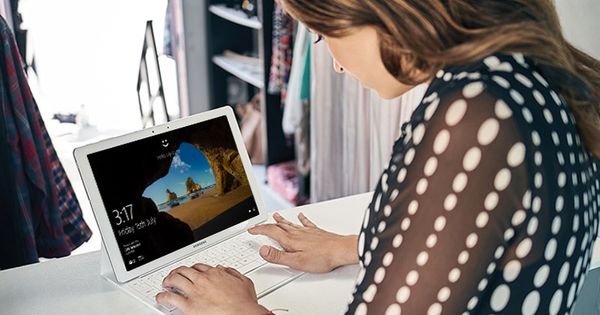Fooling Windows 10 facial authentication with a photo

Maybe you’re one of those people who care enough about the security and privacy of your computer that you enable the facial recognition feature built into versions of Windows 10, but find it too much of a pain to set up a password.
If so, you’re potentially at risk of having your computer unlocked by an attacker holding a modified low resolution laser-printed photograph of you in front of your webcam.
As described on the Full Disclosure mailing list, a team of German penetration testers discovered it was all too easy to trick a locked Windows 10 system into letting them login using a “modified printed photo of an authorised user.”
Windows Hello is a feature currently only shipping in Windows 10, allowing PCs with the necessary hardware to use special imaging techniques to let you sign in with just a look.
The researchers tested the spoofing attack against a Dell Latitude E7470 laptop running Windows 10 Pro (Version 1703) with a Windows Hello compatible webcam, and against a Microsoft Surface Pro 4 device running Windows 10 Pro (Version 1607) with a built-in camera.
The results were disappointing for those who care about security:
The default Windows Hello configuration could successfully be bypassed on both test devices with all tested Windows 10 versions. The more secure configuration with enabled “enhanced anti-spoofing” feature could only successfully be bypassed on the Windows 10 branches 1511 and 1607.
You can see the attack in action in the following YouTube video:
In October Microsoft rolled out Windows Creator updates to address the vulnerabilities discovered by the researchers, but users are recommended to enable the “enhanced anti-spoofing” feature of Windows Hello, and setup Windows Hello Face Authentication from scratch again to ensure that it can repel any unauthorised users.
Facial authentication has once again proven itself not as reliable as we might hope, and my advice for enterprises in particular is not to rely upon it for security.
What’s so wrong with a strong, unique, hard-to-crack password? Unlocking your computer with a smile might save you four seconds, but you might be in danger of losing a lot more by relying solely on your face for security.
tags
Author
Graham Cluley is an award-winning security blogger, researcher and public speaker. He has been working in the computer security industry since the early 1990s.
View all postsRight now Top posts
How to Protect Your WhatsApp from Hackers and Scammers – 8 Key Settings and Best Practices
April 03, 2025
Outpacing Cyberthreats: Bitdefender Together with Scuderia Ferrari HP in 2025
March 12, 2025
Streamjacking Scams On YouTube Leverage CS2 Pro Player Championships to Defraud Gamers
February 20, 2025
How to Identify and Protect Yourself from Gaming Laptop Scams
February 11, 2025
FOLLOW US ON SOCIAL MEDIA
You might also like
Bookmarks







